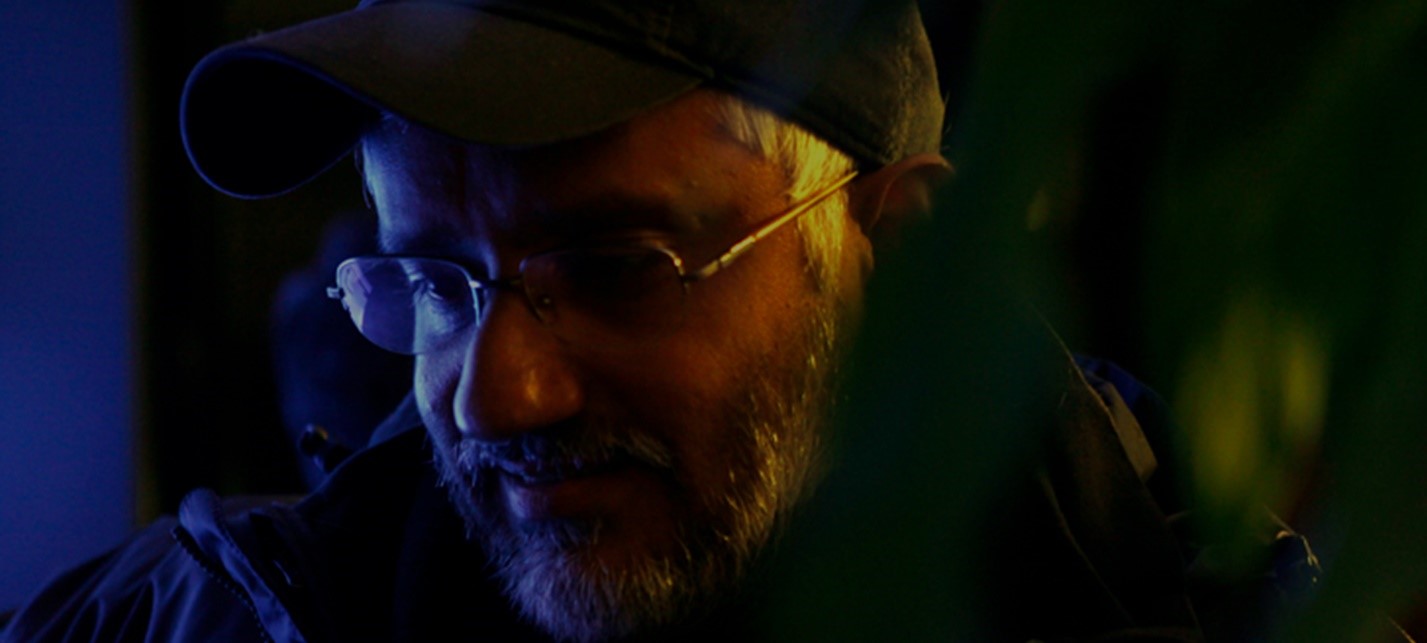Prime Ministers don’t always have to be serious, do they? India’s current Prime Minister Narendra Modi has often shown a side that reaches outside of his bureaucratic, stoic demeanour.
Here our 6 instances when Prime Minister Modi pleasantly surprised us:
Moshe, the 26/11 survivor met Narendra Modi with affection, on his recent visit to Israel.

When the Canadian and Indian PM talked about a sporty partnership.


When our PM broke protocol to hug a little girl.

When Ravi Shastri was bowled over by our PM.

When PM Modi became nostalgic.

PM Modi has a unique way of reaching out to his fans.


Tell us which instance surprised you the most.

Tag: Penguin India
5 Iconic Plays by George Bernard Shaw That Show Us Why He is the Master Playwright
Irish playwright, George Bernard Shaw, was born in Dublin on July 26, 1856. Beginning his career as a writer in London, Shaw wrote extensively in his initial years to make ends meet. After his novels failed repeatedly on being rejected by publishers, Shaw turned to writing plays.
As his plays went on to become huge successes, his satirical, witty style established him not only as a genius playwright, but also as a social commentator of his time. Shaw was also the first writer to win both the Nobel Prize for Literature in 1925 and the Academy Award for the Best Adapted Screenplay of his play, Pygmalion, in 1938.
Out of the 60 plays George Bernard Shaw wrote during his lifetime, here’s a glimpse at five of them one must not miss out on.
Pygmalion: G. B. Shaw’s most popular play, Pygmalion, premiered on stage on October 16, 1913. It is based on the well-known Greek mythological character by the same name. It has been adapted several times through the years not only on stage but also on screen, with My Fair Lady winning an Academy Award for best screenplay.

Saint Joan: G. B. Shaw’s play on the 15th century French ‘heroine’, Joan of Arc, premiered in 1923. After Joan of Arc was canonized by the Roman Catholic Church in 1920, Shaw studied the documents and transcripts of her life and trial to write a play, which he said, maintained his drama “at the level of high tragedy”.

Heartbreak House: Or Heartbreak House: A Fantasia in the Russian Manner on English Themes, was written in 1919 and premiered at the Garrick Theatre in UK’s Westminster in November 1920. In this play, Shaw adapts famous Russian writer, Anton Chekhov’s style to comment on society and the changing faces of people around us.

Candida: Written in 1894 and first published in 1898, Candida is a comedy that featured as a part of G. B. Shaw’s Plays Pleasant. The play that questioned the Victorian ideas of marriage, love and companionship became so popular that in 1904 the phenomenon was termed as “Candidamania”.

Man and Superman: The four act play written by Shaw in 1903 premiered on stage in May 1905. However, its first show omitted the third act of the play. Consequently, the third act — ‘Don Juan in Hell’, which is also the longest act in the play, has gone on to be performed as a separate piece by itself.
 Tell us your favourite work of George Bernard Shaw, as we celebrate the 161st birth anniversary of one of the pioneers of the Drama of Ideas.
Tell us your favourite work of George Bernard Shaw, as we celebrate the 161st birth anniversary of one of the pioneers of the Drama of Ideas.
Cracking the Code of Transformation
Comparing theories of change
Our research has shown that all corporate transformations can be compared along the six dimensions shown here. The table outlines the differences between the E and O archetypes and illustrates what an integrated approach might look like.
| Dimensions of change | Theory E | Theory O | Theories E and O combined |
| Goals | Maximize shareholder value | Develop organizational capabilities | Explicitly embrace the paradox between economic value and organizational capability |
| Leadership | Manage change from the top down | Encourage participation from the bottom up | Set direction from the top and engage the people below |
| Focus | Emphasize structure and systems | Build up corporate culture: employees’ behavior and attitudes | Focus simultaneously on the hard (structures and systems) and the soft (corporate culture) |
| Process | Plan and establish programs | Experiment and evolve | Plan for spontaneity |
| Reward system | Motivate through financial incentives | Motivate through commitment—use pay as fair exchange | Use incentives to reinforce change but not to drive it |
| Use of consultants | Consultants analyze problems and shape solutions | Consultants support management in shaping their own solutions | Consultants are expert resources who empower employees |
This is an excerpt from HBR’s 10 Must Reads (On Change Management). Get your copy here.
Credit: Abhishek Singh
10 Things You Didn’t Know About Vikram Bhatt
Vikram Bhatt is a reputed filmmaker and considered one of the pioneers of the Hindi film industry. Hailing from a family of cinema stalwarts, his father Pravin Bhatt is the acclaimed director of photography of more than a hundred films in a career spanning more than fifty years. In a career span of more than 25 years, Vikram has directed more than 35 films and written screenplays for more than 15 films. Currently, he heads Loneranger Productions Pvt. Ltd—a company that specializes in film, television and now also the Web.
Here are 10 things you did not know about the author of A Handful of Sunshine.










How many of these facts did you know about Vikram Bhatt?

The Fascinating Life of Ernest Hemingway: War-Veteran, Journalist, Wordsmith
Nobel laureate, Ernest Hemingway, was born on July 21, 1899 in Illinois, USA. With his works influencing generations of writers after him, Hemingway’s journalistic, pragmatic and prosaic approach became famous for conveying some of the most difficult subjects.
The evolution of Hemingway’s writing style has everything to do with the course his life had taken. For Whom the Bell Tolls and A Farewell to Arms talk about life during the times of war, a reality Hemingway had lived through for a major part of his life. But before Hemingway settled for a life as a writer, his tryst with other professions is what shaped him as the wordsmith that he is.
Here’s looking at Ernest Hemingway’s life through his different professions.
Life as an ambulance driver for the Red Cross: After graduating from high school, Hemingway turned eighteen and tried to enroll in the army as World Was I was raging in Europe. The United States had joined the fight against Germany and Austria in 1917. However, Hemingway did not make it to the army due to poor vision in one eye, something that had been passed down to him by his mother. But soon enough when he heard that the Red Cross was taking volunteers as ambulance drivers, he did not think twice before signing up. Soon after joining as an ambulance driver in Italy he was severely injured due to a mortar shell exploding a few feet away from him. Hemingway was consequently awarded the Italian Silver Medal for Valor for his services in war. A Farewell to Arms was inspired by this phase of Hemingway’s life.

Life as a journalist: Between graduating from high school and joining the Red Cross in Italy, Ernest Hemingway had his first tryst as a cub reporter for the Kansas City Star for six months. Later, after returning from war in January 1919, he had a difficult time coping with the tranquillity of life back home – a far cry from the adventurous days in the battlefield. Despite not having turned 20 yet, the war had made Hemingway mature by years in a matter of just a few months. He began to work as a staff writer and foreign correspondent for the Toronto Star Weekly later that year. In 1920, Hemingway moved to Chicago and continued to write for the weekly from there.
After his marriage, Hemingway moved to Paris in September 1921 on being hired as a foreign correspondent for the Toronto Star. In his first 20 months in Paris, he filed 88 stories for the newspaper. His years as a journalist overlapped with his years as a writer, as is often the case with many others.

Birth of the writer: Ernest Hemingway needs no introduction as a writer. He has won some of the most prestigious awards in the world of literature. Not only has he written works of fiction, like The Sun Also Rises, A Farewell to Arms, The Old Man and the Sea and For Whom the Bell Tolls, his works of non-fiction too, like Death in the Afternoon and Green Hills of Africa, have been widely read across the world through generations. Writers after his time have tried relentlessly to emulate his style that is crisp, sharp and prosaic, displaying a major hangover from his journalist days. Hemingway had become a spokesperson of World War I for his generation, thereby establishing his style distinctively from the other writers of his times.

Ernest Hemingway’s legacy lives on not only through his literature, but also through the millions of tributes made to him. From pens to planets, clothes to highway inns, Hemingway and his words have continued to live on, inspire, fascinate.
6 Every Day struggles of an Overweight Girl
Life seems a tad tough when you are not the “ideal” weight. It seems tougher when you are 25 and single. Your family, friends, and society start giving you the ‘you’re next’ nudges as you reach the ‘marriageable’ age.
In Encounters of a Fat Bride, Samah Visaria tells the story of Madhurima Pandey who is the ideal age for marriage, but not the ideal weight. Riddled with jovial and witty encounters, Samah tells the story of Madhurima’s struggle to her D-Day.
Here are six struggles that Madhurima faces which will make you feel for her.
Oh! Why can’t things in real life be as perfect as in the reel life.

Caught between the weighing scale and school.

Promises! Promises!

That’s a real disease.

The heaviest metamorphosis.

Rather be overweight than unhappy.

Are Madhurima’s struggles resonant with every girl’s? Tell us what you think.

Dealing with Dual Transformation
With the ever-changing environment, the adaptability of a business determines its height of success. A leader’s ability to percept the changing environment and act in accordance with it marks the sign of true leader. We have umpteen numbers of cases for both, the success and the failure in leading the organization towards change. Often, the path to change is seen as a one-dimensional one. However, the authors of Dual Transformation beg to differ. They firmly believe in the dual course of action required to take the company out of turbulent waters. The following excerpt clarifies the fundamentals of Dual Transformation by keeping Deseret News at the pivot:
‘Our bedrock case study comes from coauthor Clark Gilbert’s firsthand experience leading a transformation at Deseret Media. The Deseret News is one of America’s oldest continually published newspapers, tracing back to 1850. Ultimately owned by the Mormon Church (which also owns the local KSL television station), the paper historically competed in Utah with The Salt Lake Tribune under what is known in the industry as a joint operating agreement, wherein the two companies share facilities and printing presses but have independent journalists, brand positions, and so forth. As the number 2 provider in its market, Deseret Media was hit particularly hard by the disruptive punch of the internet; between 2008 and 2010 the Deseret News lost nearly 30 percent of its print display advertising revenue and 70 percent of its print classified revenue.
In 2009, Gilbert—who had done his doctoral research at Harvard on the newspaper industry and had consulted to the industry before he became head of online learning at Brigham Young University-Idaho—was asked to launch Deseret Digital Media, a newly formed organization that contained Deseret Media’s collection of websites.
Five years later, however, Deseret Media had a vibrant print publication, including a national weekly that was one of the fastest growing publications in the United States. It also had built an impressive array of quickly growing digital marketplace businesses tied to its KSL classifieds products that collectively produced more than 50 percent of the organization’s combined net income. These digital businesses shared brands, content, and a few other resources with the core business but largely functioned autonomously. Deseret Media had revitalized its historical core business while simultaneously pioneering the creation of a new hill on the media landscape. By the time Gilbert left in 2015 to become president of BYU-Idaho, net income at Deseret, in the midst of an industry in free fall, was up by almost 25 percent from 2010.
Deseret’s success, according to Gilbert, is attributed to organizing the company to adapt to two very different types of change. Rather than view change as one monolithic transformation process, Gilbert organized the company into two parallel change efforts: one to reposition the core newspaper business, and another to unlock new growth in digital markets.
We call this change effort dual transformation.
When you take your first algebra class, you’re introduced to the Greek letter delta. The capital form of the fourth letter in the Greek alphabet, Δ, also serves as shorthand in math equations for change. The kind of change we’re talking about here is indeed a very large delta. Achieving that change requires following this formula:
A + B + C = Δ
Here’s how it breaks down.
A = transformation A. Reposition today’s business to maximize its resilience.
B = transformation B. Create a separate new growth engine.
C = the capabilities link. Fight unfairly by taking advantage of difficult-to-replicate assets without succumbing to the sucking sound of the core.’
For in-depth knowledge about the theory of Dual Transformation, click here .
This is an excerpt from Scott D. Anthony, Clark Gilbert and Mark Johnson’s Dual Transformation.
Credit: Abhishek Singh
6 Things You Probably Didn’t Know About Pakistan
Meena Menon was The Hindu’s correspondent in Islamabad September 2013 to May 2014. During her time in the neighbouring country, despite the restrictions placed on her movements, Menon managed to write on a range of subjects covering swathes of life in Pakistan. Her book, Reporting Pakistan is a nuanced and wide-ranging account of a difficult yet exciting assignment which uncovers some of the hidden yet marvelous facets of the fabled “enemy”.
Here are six things you probably didn’t know about Pakistan:
Contrary to popular opinion, people in Pakistan are very welcoming of Indians

The salesman, according to Menon, was very solicitous and promised to record any film she wanted which he didn’t have on his list.
After her deployment, one of the first assignments undertaken by Meena Menon was interviewing a journalist named Ali Chishti. Chishti, a journalist with Friday Times, was forced to leave his home in Karachi.

Chishti was kidnapped and tormented for his writings on national and security issues along with the Muttahida Qaumi Movement (MQM).
Although majority of the population in Pakistan is Muslim, there are many other communities that live in the country, making it an extremely diverse society. During her time, Menon spoke to the members of the persecuted Ahmadi community. Constitutionally, the Ahmadis or Ahmadiyya or Qadianis had no right to be called Muslims. They could do nothing other Muslims could. They were heretics, according to the law, and could pray only in ‘a place of worship’ which could not be called a mosque.

In the same interview, X added, religious persecution started with the Ahmadis and when that was successful, with the government doing all it could to declare them non-Muslims, other communities were targeted, like the Hindus, Christians and Sikhs.
Rimsha Masih, a mentally challenged teenager, was accused of burning pages of Quran.

Though she was acquitted in November 2012 of all charges after it was found that the cleric who filed the case against her had planted evidence, the residents of her former neighbourhood were terrorized and forced to leave. That isolated tent camp in many ways, according to Menon spoke of hate and discrimination.
Mohammad Ali Asghar, a resident of Edinburgh, was accused of printing visiting cards in the name of Prophet Mohammad.

Menon however, found out that the real story was different. Asghar, who came to Rawalpindi in 2010, was shocked to find one of the two properties he owned there occupied by a notorious land grabber. He filed a complaint against him before leaving for the Haj pilgrimage, but it was Asghar who was arrested on his return. Predictably, all the evidence, including the letters, was handed over to the police by the complainant, who had many anti-corruption cases against him.
A gardener in Islamabad is the VIP of the city

Meena Menon, while staying in Islamabad, also observed that her neighbours obsessively cut and pruned their hedges to resemble flowers or animals—topiary.
Tell us which side of Pakistan astonished you the most?

‘Toward an Impure Poetry’ by Pablo Neruda
Pablo Neruda was a Chilean Nobel Laureate, famous for his surrealist and passionate love poems, along with historical epics and political manifestos. He was regarded as the “the greatest poet of the 20th century in any language” by another South American Nobel Laureate Gabriel Garcia Marquez.
There have been two schools of thought regarding what poetry should stand for and who it should be written for. While one school says poetry should be for the elites, or it should be “pure”, the other school, that Pablo Neruda believed in, felt poetry should be “impure” or depicting the blunt realities of life. This belief of his can be observed throughout his body of work, using metaphors and imageries that are drawn from every day things.
Here is the essay he wrote on why poetry should be impure.
It is good, at certain hours of the day and night, to look closely at the world of objects at rest. Wheels that have crossed long, dusty distances with their mineral and vegetable burdens, sacks from the coal bins, barrels, and baskets, handles and hafts for the carpenter’s tool chest. From them flow the contacts of man with the earth, like a text for all troubled lyricists. The used surfaces of things, the wear that the hands give to things, the air, tragic at times, pathetic at others, of such things—all lend a curious attractiveness to the reality of the world that should not be underprized.
In them one sees the confused impurity of the human condition, the massing of things, the use and disuse of substance, footprints and fingerprints, the abiding presence of the human engulfing all artifacts, inside and out.
Let that be the poetry we search for: worn with the hand’s obligations, as by acids, steeped in sweat and in smoke, smelling of the lilies and urine, spattered diversely by the trades that we live by, inside the law or beyond it.
A poetry impure as the clothing we wear, or our bodies, soup-stained, soiled with our shameful behavior, our wrinkles and vigils and dreams, observations and prophecies, declarations of loathing and love, idylls and beasts, the shocks of encounter, political loyalties, denials and doubts, affirmations and taxes.
The holy canons of madrigal, the mandates of touch, smell, taste, sight, hearing, the passion for justice, sexual desire, the sea sounding—willfully rejecting and accepting nothing: the deep penetraion of things in the transports of love, a consummate poetry soiled by the pigeon’s claw, ice-marked and tooh-marked, bitten delicately with our sweatdrops and usage, perhaps. Till the instrument so restlessly played yields us the comfort of its surfaces, and the woods show the knottiest suavities shaped by the pride of the tool. Blossom and water and wheat kernel share one precious consistency: the sumptuous appeal of the tactile.
Let no one forget them. Melancholy, old mawkishness impure and unflawed, fruits of a fabulous species lost to the memory, cast away in a frenzy’s abandonment—moonlight, the swan in the gathering darkness, all hackneyed endearments: surely that is the poet’s concern, essential and absolute.
Those who shun the “bad taste” of things will fall flat on the ice.
Demystifying Faiz Ahmed Faiz- 6 Things You Didn’t Know About the Poet
Faiz Ahmed Faiz is one of the greatest Urdu poets of the twentieth century. He is loved and remembered for his revolutionary verses, his delicate subtlety, and his soulful poems of love.
The Colours of My Heart, translated by Baran Farooqi, celebrates some of Faiz’s greatest works. It also includes an illuminating introduction to Faiz’s enchanting life and legacy.
Here are 6 little known things about the poet who continues to inspire us:
He studied philosophy and English literature in Lahore and finished an M.A. in Arabic.

Naqsh-e-Fariyaadi (The supplicant’s portrait), his first collection of poems, was published in 1941. All his collections are small, and even they contain some unfinished poems.

He was even deprived of writing material during the period of his imprisonment. His poems were smuggled out of prison or sent out with his letters and circulated widely.

The poem expresses disappointment on two levels: The Partition and the carnage that accompanied it.

Faiz was also active in the trade union movement. In 1951, he also became the vice president of the Trade Union Congress, the labour wing of the Communist Party of Pakistan.

Faiz marked this recognition as a humbling experience.

So, which is your favourite Faiz poem?

















